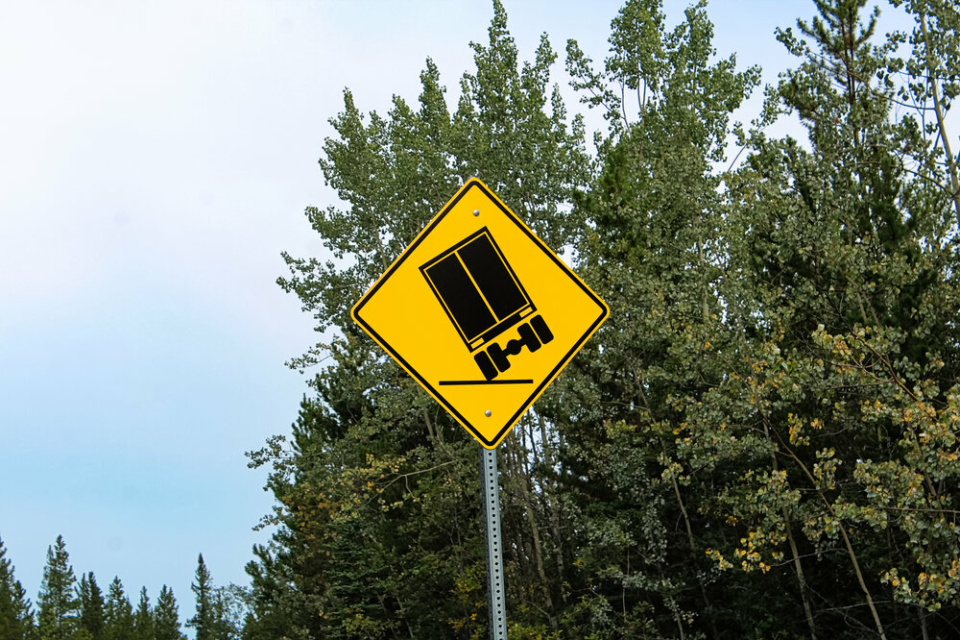Story by
Jim Heide
Tags /
- Cargo
- Freight
- Insurance

Moving truckload or LTL freight and seeing cargo insurance costs eating into profit margins?
Whether you’re a broker, shipper, or carrier, there’s critical value in cargo coverage. Depending on your business, it can open up a path to lucrative spot market opportunities and create more positive experiences for customers. It can also serve as a balance sheet stabilizer should a truckload of wine get overturned in straight-line winds or a shipment of pistachios depart California but never arrive at its destination.
Of course, while this tool can protect and enable business growth, that doesn’t mean there aren’t ways to bring down that cargo insurance rate for your business—or the customers who keep your business in the black.
For starters, be sure to price out several insurers. Insurance companies each offer different standards and specialties, so premiums can vary wildly. And, because protecting freight is such a specialized area, the insurer who issues your general liability, workers’ compensation, and E&O coverage may not be your best option when it comes to your cargo insurance.
Also, consider whether a mix of annual and pay-as-you-go coverage can deliver the cheapest cargo insurance option. With AI and automation now delivering affordable, instant single trip coverage, it might make good sense to adopt a new strategy to manage spike and gap needs so you or your customers are only paying for what’s actually needed.
That said—the single greatest thing you can do to get the cheapest cargo insurance rate is to proactively prevent losses from happening in the first place.
4 ways to reduce cargo insurance premiums
Make too many claims and insurers may tighten controls. Meaning, higher deductibles, more restrictive coverage, and higher cargo insurance premiums.
Want to keep cargo insurance costs down? Minimize losses.
Here are some common-sense approaches that—if they apply to your business—can help you do just that.
1) THOROUGHLY VET YOUR CARRIERS
Brokers and shippers—capacity is tight, which means you may need to expand your pool of carriers to keep freight moving.
As you do, be sure you’re also doing your due diligence. It will not only help you identify trusted carrier partners and reduce the risk to your freight—it may also protect you from being held liable in the event of a car-truck crash.
- Confirm your carrier is legally authorized to operate. You can search via name, USDOT number, or MC number right within the FMCSA’s SAFER system.
- Review your carrier’s compliance and safety history. An examination of your prospective carrier’s CSA scores on the FMCSA’s Safety Measurement System (SMS) will help you identify those who are taking driver safety, vehicle maintenance, and regulatory compliance seriously.
- Investigate your carrier’s cargo security philosophy. Be sure they’re as committed as you are to protecting your valuable cargo—from pre-hire background checks to cargo security devices to employee cargo theft prevention training.
- Ask about your carrier’s cyber security protocols. Are they leveraging cyber security software, regularly installing updates and security patches, and performing regular employee data security training sessions? If not, they’re more vulnerable to a breach—a breach that leaves them open to fictitious pickups and intercepted freight.
- Confirm the carrier has experience hauling your specialized commodity. If the carrier can’t speak to the proper care in loading, securing, and unloading your refrigerated goods, oversized machinery, or other specialized cargo, your load will be at greater risk of damage or loss.
Want to lighten your workload? There are a number of excellent third-party services that can confirm a carrier’s authority and review their safety and compliance history for you.

2) BUILD A STRONG SAFETY AND SECURITY CULTURE
Whether you’re a carrier, asset-based broker, or shipper operating a private fleet, a team that can be counted on to safely deliver freight begins with a pre-employment check—but it certainly doesn’t end there.
Be sure to make time for regular conversations about safety and security to reinforce best practices and maintain vigilance.
- Conduct background checks on all employees. 80% of cargo theft involves some degree of collusion, so be sure all drivers, warehouse workers, and employees that will have access to shipping information have been cleared before bringing them onboard.
- Carefully vet your drivers. Perform a drug test and review your prospective driver’s record via the FMCSA’s Pre-Employment Screening Program (or PSP) before you offer the position—and perform regular reviews going forward.
- Conduct regular safety meetings. Reviewing loss incidents, discussing what can be learned from those incidents, and discussing proper safety protocols as a team can help transfer new knowledge and prevent future losses.
- Conduct regular cyber security training sessions. Ensure employees can recognize a phishing campaign and avoid suspicious emails, links, and file downloads, as well as basic data hygiene, like creating and storing strong passwords.
3) PROPERLY PACK TRUCKLOAD AND LTL CARGO
Shippers—it goes without saying that properly packed cargo is less likely to break or spoil. Not only can that help you reduce claims and secure a cheaper cargo insurance rate going forward, but it also mitigates the risk that a future claim will be denied by your insurer.
- Accurately label boxes. Proper labeling ensures the handler has the information necessary to appropriately move and stack your cargo.
- Pad fragile cargo—and gaps within the box. Padding, like bubble wrap, will absorb bumps and ensure your items aren’t sliding around on a rough ride.
- Seal boxes with packaging tape along every seam. Boxes that pop open are at greater risk of damage, so be sure to use high-quality seals that are at least 2” wide.
- Invest in cold chain tracking tech. Alerts can enable you to address temperature-sensitive freight that’s a red zone before it results in loss and spoilage. In fact, your claim may be dependent on this tech—some insurers require it.
4) PROPERLY LOAD AND UNLOAD CARGO TO MINIMIZE LOSS
Shippers and carriers: Moving and stacking cargo on a trailer with safety protocols in place not only reduces cargo damaged in the loading and unloading process—but it also protects the health and safety of your employees.
- Install weather-proof canopies and dock seals. By keeping the dock floor dry, you’ll prevent the sort of slip hazards that can result in cargo damage and employee injury.
- Prevent movement with trailer stabilizing devices and vehicle restraints. By securing the trailer to the dock and stabilizing the trailer as forklifts move on and off the trailer, you’ll prevent movement that could result in cargo damage and, worse—workplace injury.
- Leverage dock levelers and barrier gates. They’ll smooth the loading and unloading process—and protect employees from falling from elevated platforms.
- Pre-cool or pre-warm trailers to prevent spoilage of reefer goods. Confirm trailer temperatures are within range before loading temperature-sensitive freight.
- Select flat, sturdy wood pallets to prevent stack collapse. Confirm your pallets will support the weight of your cargo, and steer clear of plastic pallets which have a tendency to crack, and wood pallets without bottom boards—they don’t evenly distribute weight.
- Stack the heaviest, least fragile items on the bottom of the stack. This will give your stacks a solid foundation and lower their center of gravity.
- Stack liquid goods below dry goods. This will prevent any leakage from damaging dry freight.
- Stabilize your stacks. For starters, shrink wrap your boxes to prevent movement and use locks to secure your cargo to the pallet. Then, fill any gaps with protector pads or dunnage bags to keep your stacks stable in transit.
- Maintain airflow for reefer freight and keep your center of gravity low. Allow at least 12 inches of space between products and the trailer ceiling.
Invest time and energy in trusted relationships. Build a safety culture. Adopt and reinforce cargo packaging and loading best practices.
At the end of the day, these approaches can go a long way toward helping you secure an affordable cargo insurance rate—ultimately protecting your margins and the future growth of your business.